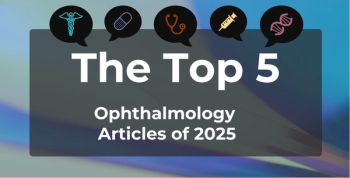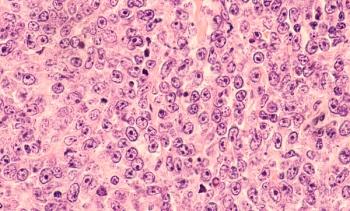
Rethinking Diabetes Care: Are New Therapies Adding Value or Cost?
Sanjula Jain, PhD, chief research officer at Trilliant Health, discusses the rapid adoption of glucagon-like peptide 1 inhibitors for diabetes and preventive care for obesity and late-onset diabetes.
The latest report from Trilliant Health examined both the rapid adoption of glucagon-like peptide 1 (GLP-1) inhibitors for
From 2018 to 2023, GLP-1 receptor agonists went from being the eighth most common drug regimen for diabetes to the
Jain also emphasized the critical role of preventive care, noting the preference for quick fixes over lifestyle changes and the ongoing fragmentation of patient-physician relationships.
"If everybody is coordinating care, nobody is coordinating care," Jain said.
This transcript has been lightly edited for clarity and length.
AJMC: What does the report imply about the shift towards GLP-1 inhibitors for managing diabetes?
Jain: That analysis is actually one of my favorites because, once again, I think it's a really good example of this question that we don't ask ourselves: "What value are we adding for every new innovation or treatment paradigm?"
There is clinical evidence both positive and negative around GLP-1s as a diabetes management tool. Once again, I'm not a clinician, so I'm not getting into to that piece. But really the purpose of that is you introduce a new therapy into a clinician's toolbox, and so they're treating patients, they now have more things to pick from. [GLP-1 therapy] now is number 2, so it's more commonly prescribed. Great, but what are the downstream impacts on that kind of care management path? Are doctors saying, "Instead of prescribing you metformin, we're just going to go straight to a GLP-1." Are we substituting drugs? Are we adding drugs? Are we replacing it? Is it a combination of the 2? What are the cost tradeoffs?
Yes, they become more popular in terms of net prescribing volume. But the thing that we don't talk enough about is, by being on a GLP-1 as a diabetes patient, it doesn't necessarily mean that you go off of metformin or insulin or other drugs. There's still a lot of polypharmacy that is happening, and there's another analysis where you see, on average, diabetes patients are still taking more drugs today than they were before.
So, when it comes back to value, we have to weigh the clinical value against the cost. Patients being on more drugs is not necessarily a high value kind of proposition. But if let's just say we had seen a decline in the average number of prescriptions that a diabetes patient was taking, that might be a slightly different conversation.
Then it goes down to the cost tradeoff. For as expensive as a GLP-1 therapy is, are we getting that much more clinical value or output relative to the existing toolkit that are more affordable? It's really just to pose that question to the medical industry. Something independently may seem very valuable and have all these great benefits, but what is the net impact when you actually think about the whole continuum of care? And what is the downstream impact, what is the upstream impact, and the early signals we're seeing? It's not that black and white.
It hasn't actually replaced older paradigms and how we're managing diabetes patients. Part of that could be cost right now, but there's a lot of medical literature out there where patients have to still be on metformin before they get a GLP-1 prescription, and often they don't even wean off the metformin. But generally speaking, there's a whole series of regimens that are prescribed. Are there some patients who just get a GLP-1 for their management? Sure. But it's about thinking about these tradeoffs and the incremental value for that diabetes patient relative to what they're paying for that for that treatment.
AJMC:
Jain: We have a primary care issue in this country. And it's more than just a supply shortage issue, it's also all the societal things that we talked about. If you tell an American consumer, "I can give you a pill or a shot, or you can go work out 60 minutes 5 days a week and you have to eat broccoli 3 times a week," the majority will say, "No, give me the easy button answer." That is human psychology, that is human behavior.
There are so many examples of that. The very proactive, health-conscious people who might be very, very informed—which is in the minority of people—might say, "No, I don't want to be taking more medication, so I will do the heavy work." But that's not the American way.
Yes, we need to invest more in primary care; we need to invest more in educating and guiding the American patient or consumer. But we also are up against this really big mindset shift where you do have the pharmacy industry who's coming up with great innovations in terms of science, but it changes the game in terms of lifestyles and behaviors. It's a kind of tension of public health and hands-on medicine and education against the easy button solutions, and everything comes at a cost.
The other thing to solve there is fragmentation. Take it away from drugs for a minute—we all walk around with our phones, our smart phones, and we're all digitally plugged in. We have no one guide of information. It used to be that people had a relationship with their primary care physician or their pediatrician—back to your point about starting early—and that's the person who you'd have that relationship with. They would guide you and say, "You should do this test" and "You should go check out this person," and you knew them. There's kind of that accountability by knowing them too, if you show up [to appointments]. Well, more and more Americans do not have an established primary care relationship.
We're seeing that more downstream—to your point about babies—there's a finding in the report that [says] we're seeing an increase in the pediatric population going to urgent care more than their established pediatrician. We're seeing more of this transactional care convenience here and there, which means people are not going to the same person and building that relationship. So, if you're off going to CVS here and then urgent care here and then a telehealth provider here, no one is actually helping you navigate all of that. What I say is, if everybody is coordinating care, nobody is coordinating care.
We could solve the primary care doctor piece tomorrow, which I think would be huge and that would help a lot of people. But we also have to figure out, how do we help inform the patient or consumer to go establish that relationship when they have all these transactional, commoditized options sitting in front of them? That's a big societal, generational thing we also have to overcome. It's the Google effect, where you know you're more likely to Google what you think you have before deciding if you're going to go see a doctor. We all do that. I'm an informed consumer, I live and breathe health care, and I do that myself, because you don't want to deal with the friction.
There's a couple of pieces there; there's no silver bullet to solving fragmentation. We, of course, need to invest more in our supply pipeline and figure out how do we incentivize more physicians to stay in primary care and serve in primary care, because we can't just rely on allied health professionals. So, there's a lot of it, but I think we talk more about the supply shortages and talk less about the fragmentation of the patient-physician relationship in America and how that is also contributing to everything we've been talking about.
Newsletter
Stay ahead of policy, cost, and value—subscribe to AJMC for expert insights at the intersection of clinical care and health economics.







































